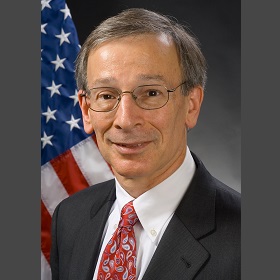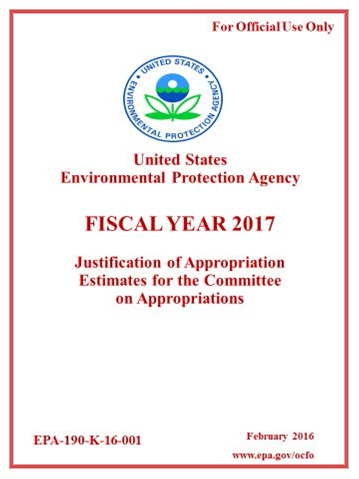- Home
- Agencies
- Department of Agriculture
- Department of Housing and Urban Development
- General Services Administration
- Department of Commerce
- Department of the Interior
- National Aeronautics and Space Administration
- Department of Defense
- Department of Justice
- National Science Foundation
- Department of Education
- Department of Labor
- Office of Personnel Management
- Department of Energy
- Department of State
- Small Business Administration
- Environmental Protection Agency
- Department of Transportation
- Social Security Administration
- Department of Health and Human Services
- Department of the Treasury
- U.S. Agency for International Development
- Department of Homeland Security
- Department of Veterans Affairs
- Goals
- Initiatives
- Programs
Primary tabs
FY 14-15: Agency Priority Goal
Improve, restore, and maintain water quality by enhancing nonpoint source program leveraging, accountability, and on-the-ground effectiveness to address the Nation’s largest sources of pollution.
Priority Goal
Goal Overview
The Clean Water Act Section 319 Program is a vital source of support for the management of nonpoint source (NPS) pollution – excess nitrogen, phosphorus, pathogens and sediments that are the primary cause of pollution in the vast majority of impaired waterways across the Country. NPS pollution comes from many diffuse sources and can include excess fertilizers and pesticides from agricultural lands and residential areas; oil, grease and toxic chemicals from urban runoff and energy production; sediment from improperly managed construction sites, crop and forest lands, and eroding streambanks; bacteria and nutrients from livestock, pet wastes and faulty septic systems, among others. Because resources are limited and NPS pollution comes from diverse sources that differ by state and locale, strategic use of Section 319 funds is essential to achieving the best water quality outcomes for this limited natural resource.
In 2013 EPA took steps to strengthen the Section 319 program, issuing revised national guidelines for Section 319 grants to states. Key aspects of the new guidelines include 50% of a state’s 319 funds are devoted to on-the-ground projects to restore and protect waterways; strengthened incentives for leveraging of additional state and local funds; an emphasis on collaboration and leveraging with USDA; and a requirement that all states have updated NPS management programs with relevant goals and annual milestones to guide their investment of Section 319 funds. Effectively utilizing limited resources for such a diverse set of pollution problems requires setting priorities, sustaining priority efforts over time, and substantial leveraging with other programs and partners. The role of the states’ NPS Management Program is to provide a roadmap for doing just that.
A meaningful state NPS Management Program reflects the state’s goals, priorities, and key annual milestones and actions over a five-year period, which focuses resources to decrease pollution and protect high quality waters. The Plan describes how multiple state agencies and other partners, such as federal agencies, will coordinate, contribute, or leverage resources to meet the state’s articulated NPS goals and employ locally driven solutions that restore degraded waterways and revitalize communities. Because a state’s NPS management program spans five years, it provides a point of reference and an accountability framework for EPA to use in evaluating and approving annual Section 319 grant workplans. EPA will work with states to ensure that the commitments and milestones in their management program are reflected in annual Section 319 workplans.
This priority goal is a continuation of the work achieved under the 2012-2013 goal that 50 percent of states with outdated NPS management programs would update their programs in accordance with new Section 319 grant guidelines that EPA released in April 2013. Significant progress has been made, but additional work remains. This priority goal will track the continued progress of states updating their NPS Management Programs. Under the FY 2012-2013 priority goal, 22 states must update their programs. (Seven states already had updated programs that meet the guidance.) This FY 2014-2015 priority goal is that all state NPS management programs will be current and aligned with the new grant guidelines by September 2015. Moving forward beyond FY 2015, states are required to review and update their program every five years to keep them relevant.
Strategies
The EPA will continue to closely track the updating of state NPS Management programs and will provide updates each quarter. Beginning in FY 2014, states will submit annual Section 319 grant workplans that are consistent with all aspects of the new guidelines. The EPA has also finalized guidance and a standardized checklist for conducting annual satisfactory progress and performance determinations of state programs. Beginning in FY 2014, EPA will assess additional ways to track and measure program progress, including tracking incremental progress towards water quality goals.
Progress Update
Nonpoint source pollution, caused by runoff that carries excess nutrients, pesticides, pathogens, toxics and other contaminants to waterbodies, is the greatest remaining source of surface water quality impairments and threats in the United States. The magnitude of the problem is great and the effects of nonpoint source pollutants have harmful effects on drinking water supplies, recreation, fisheries and wildlife. Section 319 is one of the EPA core water programs to help protect, restore, and improve water quality by financing grants to prevent or reduce nonpoint source pollution. To help ensure efficient use of Section 319 funds, the EPA requires states to keep current their Nonpoint Source (NPS) Program Plans.
Prior to the EPA’s 2012-13 reforms, a majority of state Management Programs were significantly out-of-date and did not always align with state annual grant work plans. The EPA has worked with states to submit updated NPS Management Programs consistent with all existing guidance. As a result of the requirement to update state NPS Management Programs, many states have renewed priorities and in some cases restructured their programs. These program plans articulate current state goals and objectives, and contain up-to-date trackable annual milestones, as required by Section 319 of the Clean Water Act. They further describe state priorities, authorities, initiatives, funding sources, partnerships, implementation programs and tools. Under the EPA’s guidelines, if an activity is not described in the state Management Program, it is not eligible for 319 grant funding.
As of September 30, 2015 all states and Washington, D.C. have up-to-date Management Programs for the first time since 2000. It was a collaborative effort by EPA and the states, who now have a 5-year roadmap for their nonpoint source programs. In summary, states have embarked on an up-to-date set of watershed priorities and approaches, established meaningful outcome-oriented annual milestones for which they are held accountable, and these priorities are reflected in their annual 319 grant work plans submitted for approval and funding to the EPA.
While this Agency Priority Goal is complete, the EPA will continue to require state NPS management program documents be kept current on a 5-year basis as a roadmap to focus state investments.
Additionally, the EPA will continue its collaboration with the USDA to target water quality investments in National Water Quality Initiative watersheds, initiate instream monitoring programs and build positive working relationships at the state level between Natural Resource Conservation Service and water quality agencies. In FY 2015, U.S. Department of Agriculture Natural Resource Conservation Service invested about 5% of its Environmental Quality Incentives Program funds in 183 targeted watersheds. State water quality agencies conducted in-stream monitoring in a subset of approximately 60 of these watersheds. Monitoring got underway in these watersheds in FY 2014.
Next Steps
No Data Available
Expand All
Performance Indicators
Restored waterbodies impaired by NPS
Number of states with updated nonpoint source management programs that fully comport with the new Section 319 grant guidelines.
Contributing Programs & Other Factors
The EPA is working in concert with sister federal agencies to ensure the efficiency, efficacy, and coordination of our complementary efforts that can be used to address NPS pollution. Since 2012, EPA has been working collaboratively with the U.S. Department of Agriculture (USDA) on the National Water Quality Initiative (NWQI). Through the NWQI, USDA invests 5% of Environmental Quality Incentives Program (EQIP) financial assistance funds in an average of one to three small watersheds per state. The funds are used where willing landowners agree to cost-share a suite of conservation practices on their lands. The selected conservation practices address sources of excess nitrogen, phosphorus, sediments, and pathogens (from animal agriculture).
The goal of our collaboration is to coordinate Agency efforts, thereby targeting conservation on the ground to better protect water resources from NPS of pollution. States provide recommendations for priority watersheds to USDA and are providing monitoring support to gauge water quality progress as a result of these targeted investments. States will focus monitoring efforts in one NWQI watershed per state, and use existing state protocols and QA/QC to address the question of whether water quality has changed, and if so, whether the change can be associated with agriculture conservation practices in the watershed.
No Data Available










